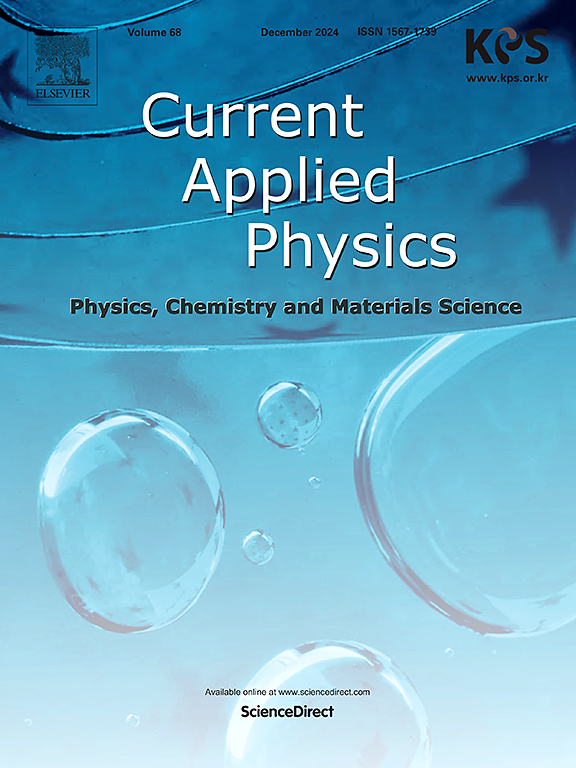应变诱导的各向异性对Janus WSeTe电子特性和偶极矩差的影响
IF 3.1
4区 物理与天体物理
Q3 MATERIALS SCIENCE, MULTIDISCIPLINARY
引用次数: 0
摘要
在Janus过渡金属二硫族化合物(TMDCs)应变工程是一个强大的方法来调整电子,光学和机械性能。利用第一性原理计算,我们探讨了单轴和双轴应变对Janus TMDCs的各向异性影响。我们的研究结果表明,双轴应变诱导对称修饰,导致晶格常数和电子能带结构的均匀变化。然而,单轴应变引入了各向异性,结构和电子响应取决于应变方向。在较小的单轴应变(8%)下,锯齿形和扶手形方向的差异很小,较高的应变(12%)会导致显著的各向异性效应。在这种情况下,能带结构和态密度(DOS)沿两个主要晶体学方向表现出明显的变化,突出了应变诱导修饰的方向依赖性。这些发现为Janus TMDCs的应变诱导各向异性提供了见解,并为其在纳米电子和光电子器件中的应用提供了指导。本文章由计算机程序翻译,如有差异,请以英文原文为准。

Strain-induced anisotropic effects on the electronic properties and dipole moment differences of Janus WSeTe
Strain engineering in Janus transition metal dichalcogenides (TMDCs) is a powerful approach for tuning electronic, optical, and mechanical properties. Using first-principles calculations, we explore the anisotropic effects of uniaxial and biaxial strains on the Janus TMDCs. Our results reveal that biaxial strain induces symmetric modifications, leading to uniform changes in the lattice constants and electronic band structures. However, uniaxial strain introduces anisotropy, with the structural and electronic responses depending on the strain direction. Under small uniaxial strain (8%), results in minimal differences between the zigzag and armchair directions, a higher strain (12%) leads to remarkable anisotropic effects. In this regime, the band structure and density of states (DOS) exhibit distinct variations along the two principal crystallographic directions, highlighting the directional dependence of strain-induced modifications. These findings provide insights into strain-induced anisotropy in Janus TMDCs and offer guidance for their application in nanoelectronic and optoelectronic devices.
求助全文
通过发布文献求助,成功后即可免费获取论文全文。
去求助
来源期刊

Current Applied Physics
物理-材料科学:综合
CiteScore
4.80
自引率
0.00%
发文量
213
审稿时长
33 days
期刊介绍:
Current Applied Physics (Curr. Appl. Phys.) is a monthly published international journal covering all the fields of applied science investigating the physics of the advanced materials for future applications.
Other areas covered: Experimental and theoretical aspects of advanced materials and devices dealing with synthesis or structural chemistry, physical and electronic properties, photonics, engineering applications, and uniquely pertinent measurement or analytical techniques.
Current Applied Physics, published since 2001, covers physics, chemistry and materials science, including bio-materials, with their engineering aspects. It is a truly interdisciplinary journal opening a forum for scientists of all related fields, a unique point of the journal discriminating it from other worldwide and/or Pacific Rim applied physics journals.
Regular research papers, letters and review articles with contents meeting the scope of the journal will be considered for publication after peer review.
The Journal is owned by the Korean Physical Society.
 求助内容:
求助内容: 应助结果提醒方式:
应助结果提醒方式:


